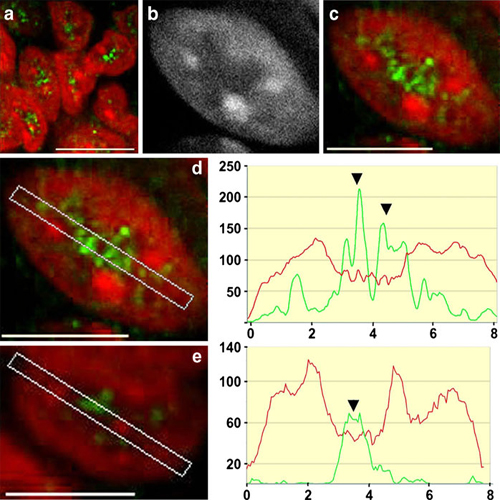Nuclei of chicken neurons in tissues and three-dimensional cell cultures are organized into distinct radial zones
20-Jan-2011
Chromosome Research, 2011, DOI: 10.1007/s10577-010-9182-3, published on 20.01.2011
Chromosome Research, online article
Chromosome Research, online article
We used chicken retinospheroids (RS) to study the nuclear architecture of vertebrate cells in a three-dimensional (3D) cell culture system. The results showed that the different neuronal cell types of RS displayed an extreme form of radial nuclear organization. Chromatin was arranged into distinct radial zones which became already visible after DAPI staining. The distinct zones were enriched in different chromatin modifications and in different types of chromosomes. Active isoforms of RNA polymerase II were depleted in the outermost zone. Also chromocenters and nucleoli were radially aligned in the nuclear interior. The splicing factor SC35 was enriched at the central zone and did not show the typical speckled pattern of distribution. Evaluation of neuronal and non-neuronal chicken tissues showed that the highly ordered form of radial nuclear organization was also present in neuronal chicken tissues. Furthermore, the data revealed that the neuron-specific nuclear organization was remodeled when cells spread on a flat substrate. Monolayer cultures of a chicken cell line did not show this extreme form of radial organization. Rather, such monolayer cultures displayed features of nuclear organization which have been described before for many different types of monolayer cells. The finding that an extreme form radial nuclear organization, which has not been described before, is present in RS and tissues, but not in cells spread on a flat substrate, suggests that it would be important to complement studies on nuclear architecture performed with monolayer cells by studies on 3D cell culture systems and tissues.











